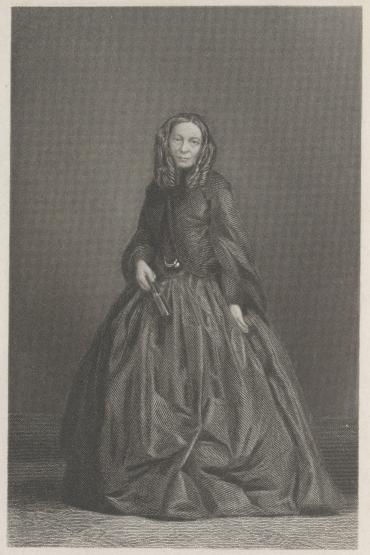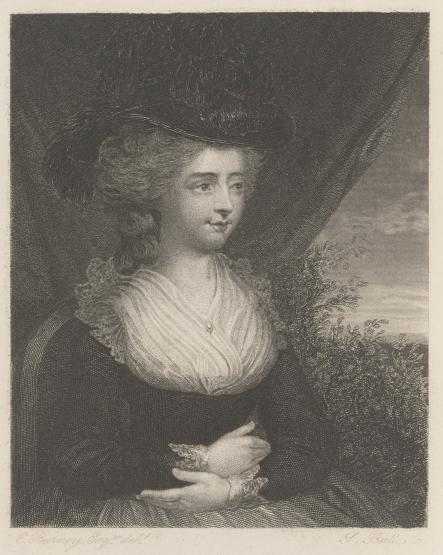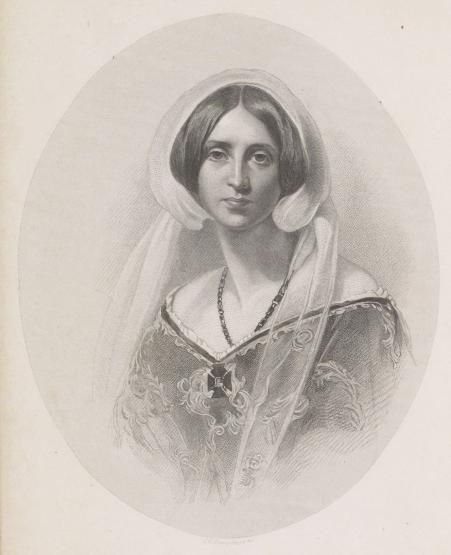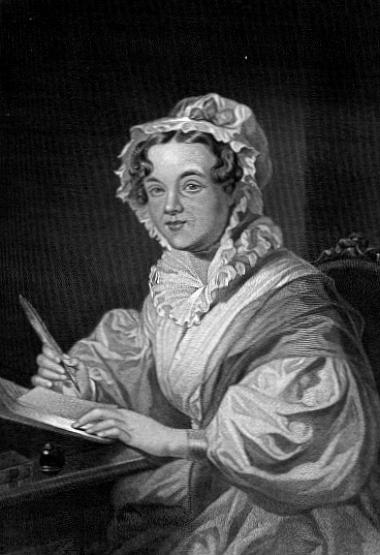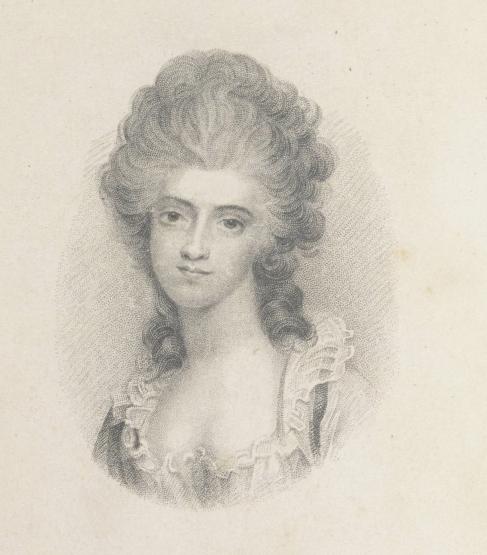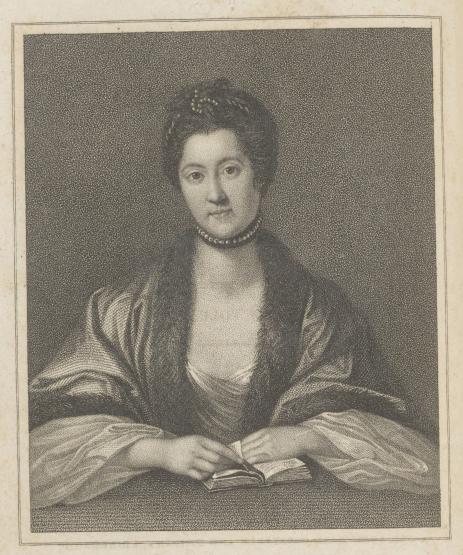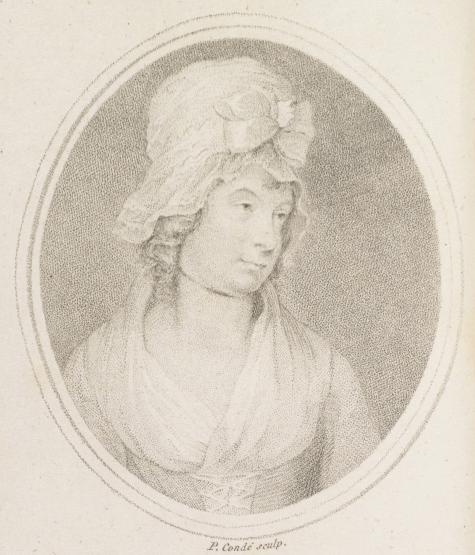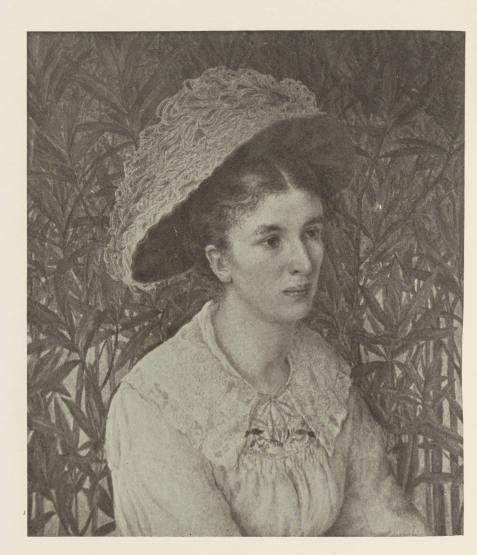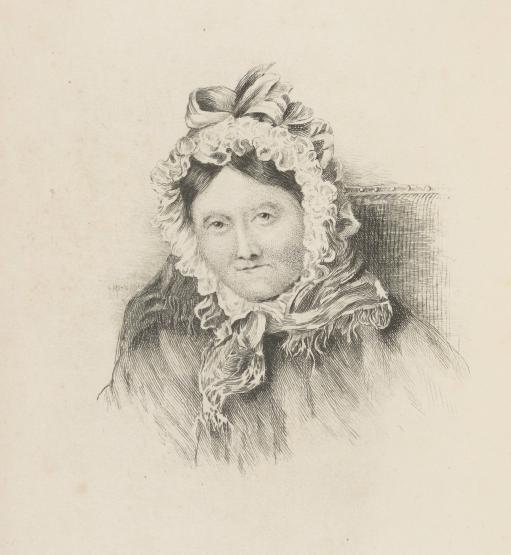Women in the Blunden Collection
Unusually for his time, Blunden collected books by several prolific British women authors, including Jane Austen, Charlotte and Emily Brontë, Christina Rossetti, and Mary Shelley, as well as by the American poet Emily Dickinson. Beyond these well-known authors, there are a number of other British women authors represented in his collection. They stand out for their literary merit as well as for the number of volumes Blunden collected by them.
Elizabeth Barrett Browning: Blunden signed several works by Browning (1806-1861) and left notes in her popular long blank-verse poem Aurora Leigh (1890). Blunden collected several volumes of her poetry including her popular love poems. She also published The Runaway Slave at Pilgrim’s Point (1848) as an abolitionist gift book to protest against slavery in the U.S.
Frances Burney: Blunden was interested in collecting books about 18th- and 19th-century English culture and society. Madame D’Arblay (1752-1840), better known by her maiden name, Fanny Burney, made valuable contributions about these areas in her novels, diaries, and letters. Her diary entries also share interesting perspectives on how she approached writing, especially her famous work Evelina (1778). Blunden attached a newspaper clipping to his 1911 edition of this work reporting on the burning of a house that once belonged to Burney. According to the article, many artifacts from the Burney Room, including manuscripts, novels, letters, and portraits were destroyed in the fire.
Sara Coleridge: Sara Coleridge (1802-1852) is well known for her children’s verse. Blunden left notes about her most popular children’s verse, “The Months” in Pretty Lessons in Verse for Good Children (1845) which she wrote for her own children. Blunden leaves an insightful comment about a new perspective he gained after reading Memoirs and Letters of Sara Coleridge (1875): “It seems as if we should have a new account of Sara...she could never see herself except as S.T.C.’s child.” Blunden went to Christ’s Hospital, the same school Samuel Taylor Coleridge attended.
Elizabeth Gaskell: Blunden likely collected Elizabeth Gaskell‘s (1810-1875) work for her depictions of Victorian society. Like other women authors in his collection, Gaskell associated with famous literary figures at the time like John Ruskin, Florence Nightingale, and Charlotte Brontë, even writing a biography (1857) for Brontë. Her books like North and South (1887) offer a Manchester experience of industrialization in rapid modernization and emerging capitalist economies.
Mary Russell Mitford: Mitford (1787-1855) is well known for her prose sketches of English village life. Our Village (1832) establishes the format of the realistic domestic novel. Her descriptions of rural English life are settings that Blunden explores in his own nature poetry.
Sylva Norman: Sylva Norman (1901-1971) is notable for her work on Mary Shelley, including On Shelley (1938) and Flight of the Skylark: The Development of Shelley’s Reputation (1954). She was Blunden’s second wife and co-authored with Blunden We’ll Shift Our Ground; or, Two on a Tour, Almost A Novel (1933). His World War I experience greatly inspired this highly autobiographical novel as it follows two characters traveling to visit the battlefields of Flanders, reflecting Norman and Blunden’s frequent visits to these battlefields.
Mary Robinson: Mary Robinson (1758-1800) is acclaimed for her poetry and novels as well as for her theatre performances. Blunden admired her poetry, leaving comments about her beauty in Poems (1791) and connections to British places in Memoirs of the Late Mrs. Robinson (1801). Robinson’s connections to British royalty and influences in 18th-century fashion make valuable contributions to Blunden’s collection on British culture.
Anna Seward: Blunden collected several volumes of Anna Seward’s (1742-1809) poetry. Seward engaged with popular literary figures in her childhood home in Lichfield, including authors Blunden was also interested in collecting like Samuel Johnson, James Boswell, and Sir Walter Scott who published some of Seward’s poetry posthumously. Her poetry is known for its romantic themes. Blunden left marginalia in all 3 items of his Seward volumes. In Seward’s Sonnet X written to Honora Sneyd, her foster sister, April 1773, Blunden asks in the margin, “Why did Anna fear such aversion?” This sonnet illustrates a troubled character grappling with forbidden love, which may reflect what some queer scholars hypothesize about Seward’s own queer relations.
Charlotte Smith: Charlotte Smith’s (1749-1806) poetry and natural history texts reflect Blunden’s own interests collecting in this genre and topic. Smith’s A Natural History of Birds (1819) is a children's schoolbook that reflects her unique interest in natural history and poetry, where readers can view beautiful illustrations of birds at the end of each volume and learn about scientific descriptions alongside bird depictions in personal poetry and Greek and Roman mythology. Researchers can also find Blunden’s great interest in Smith’s poetry through marginalia in Elegiac Sonnets and Other Poems (1811) and flyleaf notes quoting and challenging William Wordsworth’s criticism of Smith’s writing in Conversations Introducing Poetry: Chiefly on Subjects of Natural History (1804).
Mary Augusta Ward: Blunden collected Mary Augusta Ward’s (1851-1920) best-selling works like Lady Rose’s Daughter (1903) and The Marriage of William Ashe (1905), popular with British and American readers. Ward was asked by former President Theodore Roosevelt to write about Britain during World War I for an American audience. She became one of the first female war correspondents through her visits to factories, the British fleet, and the same trenches that Blunden experienced as a soldier. Ward published Fields of Victory (1919) after this experience. Researchers will find valuable contributions to Blunden’s copy with many interesting anecdotes and comments reflecting his own WWI experience.
Dorothy Wordsworth: Some of Blunden’s poetry reflects nature elements that remind him of the Kentish countryside where he grew up. Blunden likely appreciated Dorothy Wordsworth’s (1771-1855) English prose, which is known for nature descriptions. Blunden left many insertions like biographical entries in the volumes of letters between Dorothy and her brother, William. She was separated from her brother when her mother passed away in 1778, so their letters reflect a deep relationship of sympathy between them. She and her brother moved to Somerset in 1796, where entries from her Alfoxden journal (1798) reveal close connections with literary neighbor, Samuel Taylor Coleridge, a poet and philosopher whose volumes Blunden also collected.
Resources
Campbell, Caelen. “Charlotte Turner Smith’s ‘A Natural History of Birds Intended Chiefly for Young Persons.” The Women’s Print History Project, 26 March 2021, https://womensprinthistoryproject.com/blog/post/69.
Reynolds, Nicole. “The Many Lives of Mary Robinson’s Memoirs,” Studies in Romanticism 60 no.4 (Winter 2021): 383-400 (accessed March 31, 2023). https://muse-jhu-edu.proxy.library.ohio.edu/article/846632. [Note: Ohio University login required for access].
For more information:
Authors, titles, and series in the collection can be viewed more extensively through a search on Edmund Blunden Collection in the ALICE library catalog. More specific information may be obtained by using "limit this search" for particular authors, dates of publication (e.g., after 1899 and before 1911), or publishers.
Page created by Alexis Voisard, MA student in English, 2022-23 Rare Books Graduate Assistant
